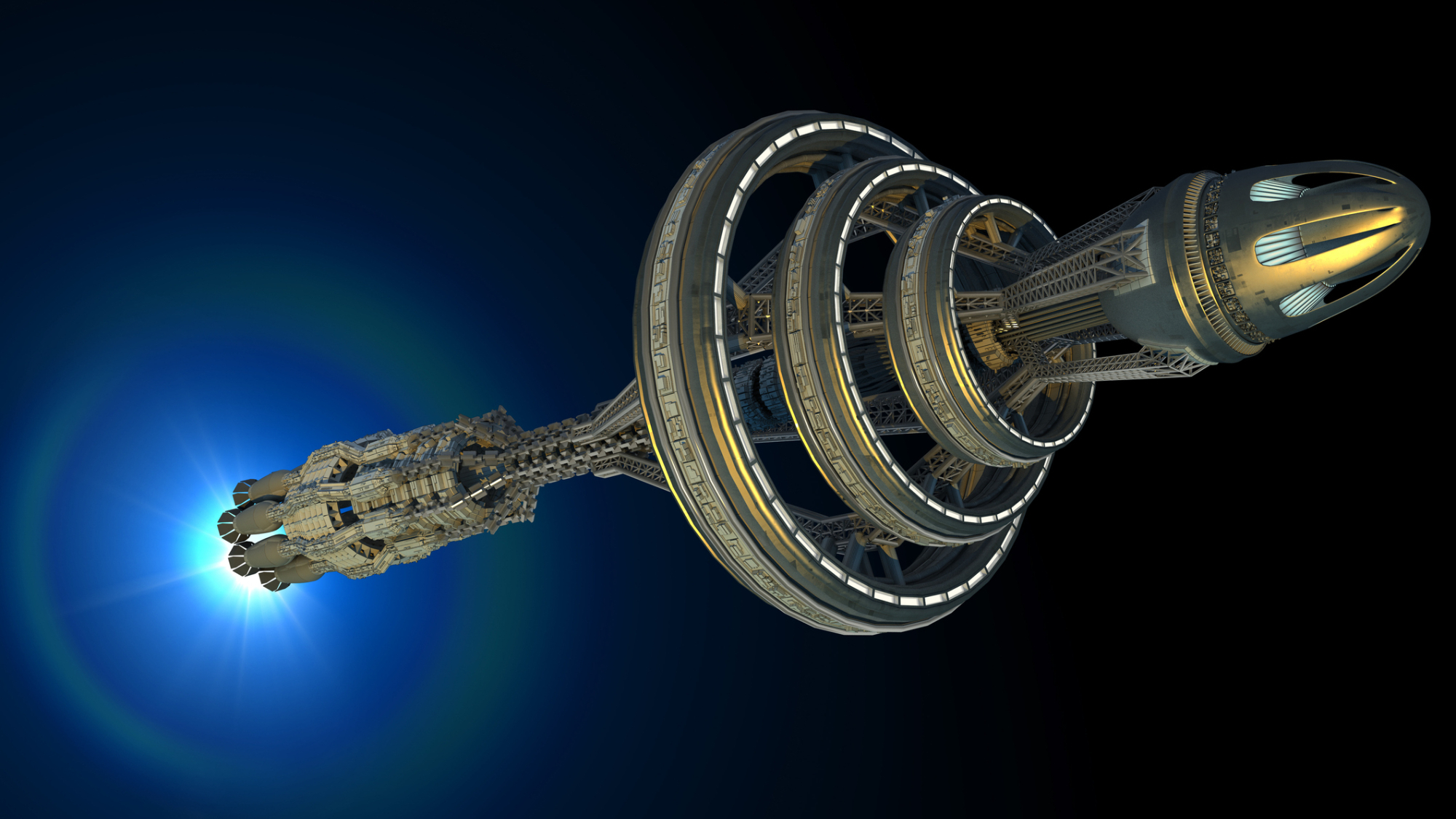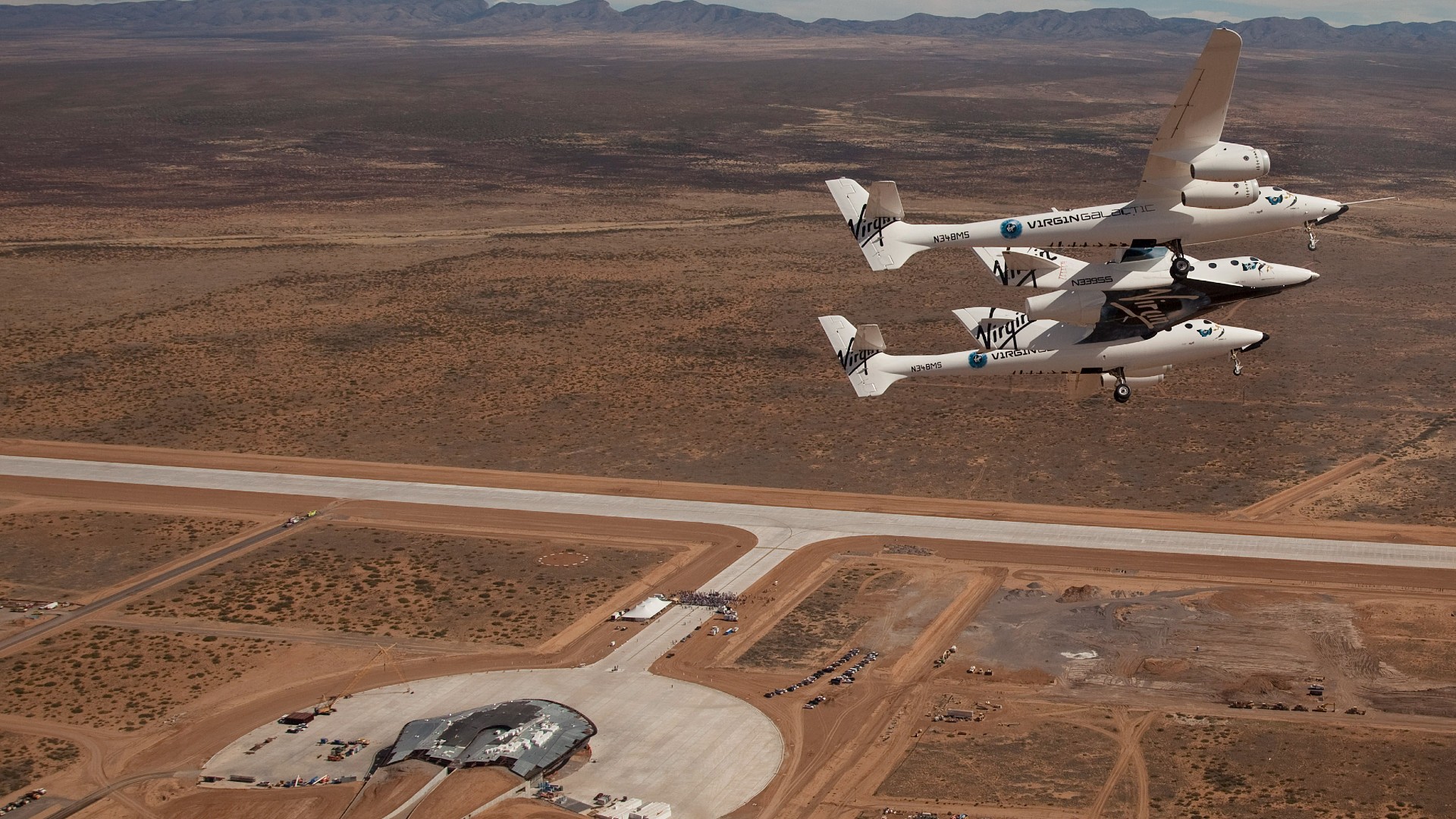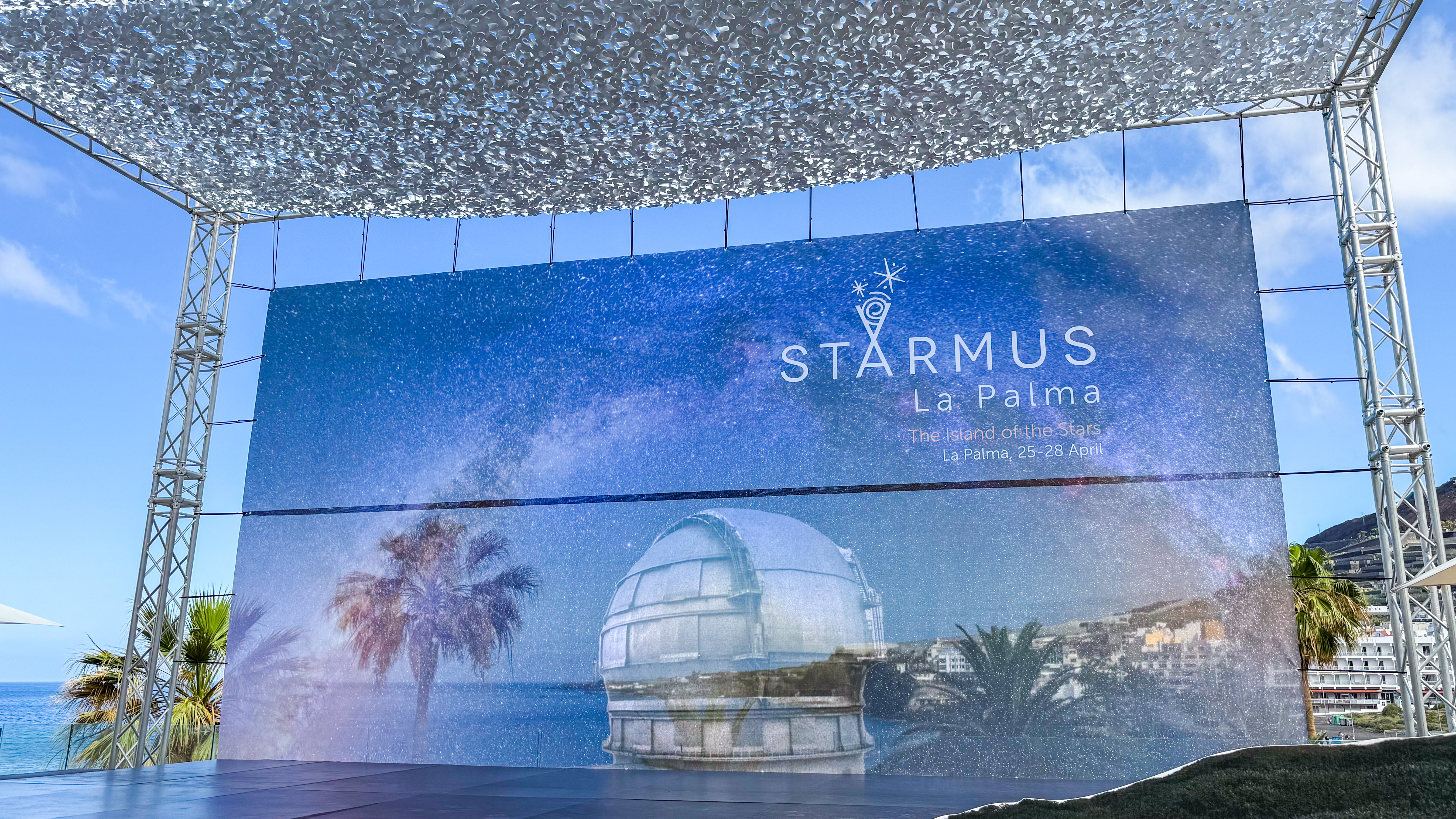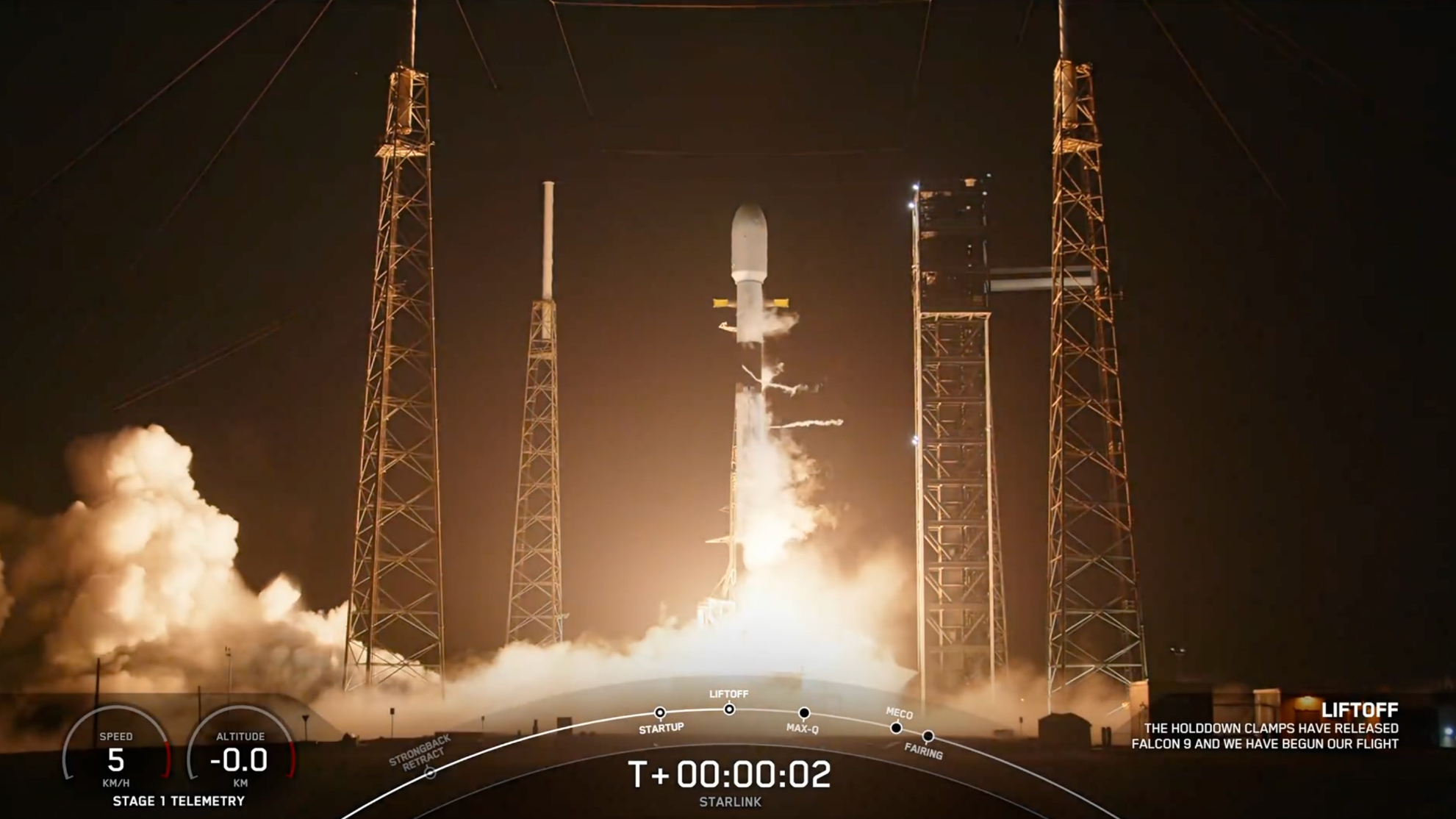Design an interstellar 'generation ship' to spend decades among the stars with Project Hyperion competition
A new design competition, dubbed Project Hyperion, is calling for submissions for the design of a crewed interstellar generation ship.

Human technology has allowed us to extend the scope of our curiosity beyond the confines of our home world and into the solar system. But it's not hard to imagine that one day humans will want to venture further, perhaps towards a star in our galactic vicinity that might host a rocky, watery world not unlike Earth.
Getting there, however, is complicated. Even if human technology reaches a point in the near future where we could create a propulsion system that could get a spaceship within 10% the speed of light (which is orders of magnitude faster than what is currently possible), a journey to a nearby star hosting a potentially habitable world could take decades or hundreds of years at best. Given these limitations, a number of scientists and science fiction authors have pondered the feasibility of something called a "generation ship." A generation ship is a hypothetical spacecraft capable of sustaining human inhabitants for multiple generations as they make the vast journey to a nearby star system.
A new design competition, dubbed Project Hyperion, is calling for submissions for the design of a crewed interstellar generation ship. The project is part of study that is aiming to provide an assessment of the feasibility of crewed interstellar flight using current and near-future technologies, and hopes to inform future research and technology development as well as informing the public about logistics and potential of interstellar travel.
Rather than focusing on the design of the propulsion system, or structural design of the ship, researchers are specifically interested in answering what an ideal space habitat architecture and social system would look like for such a journey.
For the competition, a team of at least one architectural designer, one engineer, and one social scientist is tasked with designing the habitat of a generation ship, including its architecture, and system of societal organization.
The constraints applications must adhere to are as follows:
- The duration for the hypothetical mission is 250 Earth years from launch to arrival at the destination.
- The target destination is a rocky planet with an artificial ecosystem created by a precursor probe.
- The generation ship/habitat generates Earth equivalent gravity via rotation.
- The habitat will provide atmospheric conditions similar to Earth.
- The habitat shall protect its inhabitants from radiation and possible impacts.
- The ship should be able to accommodate 1000 +-500 people over the entire trip duration.
What are some factors that designers should be mindful of? While no human has spent such long periods of time in space, science fiction authors have been exploring what types of challenges such a project could face, in addition, human beings have been living and working in space for some time. What have we learned?
Get the Space.com Newsletter
Breaking space news, the latest updates on rocket launches, skywatching events and more!
- Privacy: How will the design of the ship ensure inhabitants can achieve privacy given they are going to be confined to a ship with hundreds of people?
- Mental health: How will the design of the habit mimic Earth's natural environment?
- Conflict resolution: How will the design of the habitat minimize potential conflict, and how will the social system deal with possible unethical behavior?
- Intimacy: How will the design of the ship allow for intimacy between inhabitants?
- Social Hierarchy: How will social roles be allocated/enforced?
- Connection to Earth: How will inhabitants maintain their connection to Earth?
Designs will be evaluated on their architectural considerations, such as how the living space will function for its inhabitants, as well as its aesthetic properties. They will also be evaluated on the technical details, such as how the essential physical needs of the inhabitants are met (e.g. food, water, waste recycling). And lastly they will be evaluated on their social planning, such as what cultural value system will the society adopt, and how this system will mitigate against issues the society is likely to come up against.
For more information about the specific requirements of the competition, and the competition's timeline, you can find them at ProjectHyperion.org.
Join our Space Forums to keep talking space on the latest missions, night sky and more! And if you have a news tip, correction or comment, let us know at: community@space.com.

Conor Feehly is a New Zealand-based science writer. He has earned a master's in science communication from the University of Otago, Dunedin. His writing has appeared in Cosmos Magazine, Discover Magazine and ScienceAlert. His writing largely covers topics relating to neuroscience and psychology, although he also enjoys writing about a number of scientific subjects ranging from astrophysics to archaeology.
-
martinbyrne A fascinating idea of course. My only objection would not be technical but moral. Is it fair to expect generations of humans to live confined on a ship this size and live their lives without either seeing Earth or their destination planet? I think generational starships are immoral and such technology should only be used if and once there is some kind of hibernation technology for the crew so that they arrive without having used up too much of their lives. This applies also in the case of much extended life spans in the future; who could bear the boredom of such a trip?Reply -
billslugg Yes, totally agree. It would be immoral to have a child on such a ship. There are problems with suspended animation that might be difficult to overcome. The naturally occuring phosphorus in our bones emits radiation that degrades the DNA. I have read of a predicted 1,000 year limit.Reply -
Unclear Engineer I am not so sure that I agree with the morality case made above.Reply
It really depends on how the spacecraft is designed. If it is just a box with life support plumbing and no windows, it would be very confining, mentally. But if it is a living ecosystem, with room to move around, tasks to perform for survival, and observatories to let people observe where they are and where they are headed (with appropriate telescopic infrastructure), I am not seeing this as being much different the living on Easter Island before Captain Cook got there.
Confining? - definitely! But, it would be the only "real world" that successive generations ever knew. There would be psychological adaptation - and cultural evolution.
The real question in my mind would be how humans react to the absolute certainty that their little ecosystem has a limited viable population. Could they accept that, and stay one cohesive culture, or would there be competition for dominance of different subcultures with different ideas - as has developed on our much larger multi-generational space craft that we have named "Earth"? -
Wonder Wart Hog A very interesting subject and discussion. If you want to read a very recent fictional take on a generational starship see Anthony Doerr's Cloud Cuckoo Land. This novel features a generation starship called the Argos which is flying its crew of humans to a nearby star at 10% of the speed of light. The trip is scheduled to take around 600 years. At the time in the novel, they're around 7 decades into the trip and quite a few children have been birthed onboard the Argos. It's very interesting how Mr. Doerr handles most of the issues discussed in this article on his fictional Argos. It is especially interesting how he handles the issue of disclosing to the children that the trip is going to take 600 years and none of them are ever going to live to see to the planet that is the trip's destination. The novel is actually way larger than just the Argos, spanning eight centuries and with five main characters, only one of which is on the Argos. I consider it an excellent read and one of Mr. Doerr's best novels. Note: Anthony Doerr won the Pulitzer Prize in fiction for his novel All the Light We Cannot See. Cloud Cuckoo Land is his first novel published after the release of All the Light We Cannot See.Reply -
Noobitron And the complexity is even bigger...Reply
There's manufacturing. Equipment on the ship will wear down / break down over time. Tools and parts will be needed for repairs. Do you bring all possible tools and all possible parts with you? If no, it must be possible to manufacture them on the fly on board. Crew members can get sick, requiring medications. And a lot of medications may not have a shelf life of hundreds of years. Thus, the ship must be equipped with pharma-producing capabilities.
And every ton, every kilogram, every gram of payload required for all of that increases the demands on the propulsion system.
Next - Biology... can we create a stable closed environment that is habitable for hundreds of years? The Biosphere2 experiment showed how horrendously complicated and shaky that can be. Fungi, bacteria, viruses can affect us, and lead to some unpredictable out-of-balance runaway effect a few years or decades into the journey.
Maybe all of these aspects are a reason why we haven't picked up any signs of civilizations spreading across the stars... the astronomical (pun intended) efforts and challenges to cross the gaps between the stars might just be flat out impractical in the end. Occam's razor. -
ChrisA One huge problem. Almost every first-world country now has a birth rate less than 2.1. This means their population is shrinking. Yes, The US is still growing its population but only because of immigration. If people stopped moving to the US, it too would be in decline.Reply
So even if you fill the ship with 1,000 people. If the ship is like many modern countries the population will decline over the coming years. To maintain a stable population, each woman will need to have slightly more than 2 kids in her lifetime.
The other problem is that 1,000 people is far too few. There is a certain minimum size that the technological society must have. That number might be closer to 100 million then only 1,000. Our society needs many specialists. We need universities and farmers and kindergarten teachers and barbers and fashion designers andengineers of all kinds plus the schools to train all these people.
Mmaybe some AI-powered robots can remember skilled trades like semiconductor manufacturing, computer programming and medical care. But if you do that you end up at the destination with unskilled primitive humans who only know how to watch 250 year old films while being taken care of by robot baby sitters.
It will be very interesting to see how people deal with the possibility of an impact with a speed of 10% of light. The kinetic energy of a small space-rock at that speed is kind of like a nuclear bomb. Then of course space is not a pure vacuum. There are quite a large number of hydrogen atoms in every square meter of space. These will continuously rain down on the ship, collide with the hull, and set off a cascade of particles. The usual sci-fi solution is to invent a magic "deflector beam". But is magic allowed here?
I strongly suspect the winning design will all be from non-engineers and based on a very naive and shallow understanding of science so this winning design will only serve to perpetuate the idea that a generation ship is possible. The contest requirements are after all to "design a science-fiction ship"
Realistically the ship will need to hold a population that is compatible with Japan or California and there must be enough interior space that people can find a way to "travel" to "far away" parts of the ship where conditions are different
As for windows, why? There is nothing to see in interstellar space. Ok, stars. But these stars are unchanging in one person's lifetime. They would seem motionless for decades and there is no reason to look. So maybe just a tiny section of the ship has windows that a few people might go to once in their lifetime.
The declining birth rate is a big problem, You might get to the destination with only half the number of people you started with or even less. -
Unclear Engineer The declining birth rate is not a problem that can't be dealt with directly. And, anyway, it seems to be a result of socioeconomic stresses on the middle income population. Remove the stresses, and the birth rate would probably increase on its own.Reply
Regarding "windows", I was thinking telescopes with viewers inside the space craft, intended to give the occupants a sense of where they are and an ability to study where they are headed. I think that is a psychological necessity.
The other issues are more realistic barriers.
Not even considering the issues related to travel speed, just maintaining a closed ecosystem in stable condition for the required period of time is not something we are currently capable of doing. Surely, we will learn a lot by having very isolated habitats in space - on the Moon and maybe Mars, and maybe in a solar orbit like the Lagrange points at L4 and L5. But, we would not have 200 years of continuous isolation experience to proof a system. It would be interesting to run the probabilistic analysis for the survival of the system design, if there ever is one.
Regarding propulsion and speed of travel, besides the barriers we currently have for getting enough mass to high enough speed and then stopping it once we arrive at the destination, there is the old joke about the umpteenth generation arriving after a 200 year long trip: As they debark, they are greeted by smiling Earthlings that arrived 100 years earlier on a faster ship that was invented 100 years after the slower travelers departed Earth. -
ChrisA Reply
crossing the gaps between stars certainly is physically possible. But not by sending modern-day humans. In only a few decades we will have two technologies that will help.Noobitron said:Maybe all of these aspects are a reason why we haven't picked up any signs of civilizations spreading across the stars... the astronomical (pun intended) efforts and challenges to cross the gaps between the stars might just be flat out impractical in the end. Occam's razor.
1) A fuller grasp of genetic engineering. If not in 30 years then in 300 or 3000 we will have the ability to create designer humans. The first of these will be designed to simply not have "bad genes". Then later we might design humans to better resist or even be immune from cancer. Eventually, parents will want children that are stronger and smarter and to have longer and healthier lives. At some point glow in the glow-in-the-dark blue hair might be fashionable for your kids. Or maybe for a few years having long arms but short legs is considered "cool" as long as the knuckles don't drag on the ground. Seriously, once you open up "creative DNA editing" we would be living in the Disney "Monsters Inc." movie.
Now back to space travel. We don't send people like you and me. We send a population that is designed to survive in the new conditions of a generation ship. They would be very tolerant of radiation and might live for 300 years. Or they could be specially designed to survive 100,000 years of suspended animation while frozen in blocks of solid helium. That would kill us for sure, but not them, they are designed to survive being frozen. Almost anything will be possible in 1,000 years if not in 10,000.
2) AI is a brand-new science. Today the field is only 50 or 60 years old and I am sure that all the important discoveries are still in the future. Today AI is like physics was before Isaac Newton. We have ideas and rules of thumb and stuff that almost works but there is no guiding principles, just ad-hoc design. But in 30 or 300 years, maybe someone like Newton will be born and write a book called "Principia, of Conscious Behavior". Then after that, we have truly human-equivalent mechanical intelligence. These will be the ones who travel to the stars. They can in theory live forever or at least suspend operations for milinia while traveling.
If we ever see aliens on Earth, they will be of this kind. A kind of AI that seems organic and natural.
I also thought that the birth rate issue might take care of itself. But look at where it declines. It is in the population that is LEAST pressured. As it turns out it is a problem with educated, afluent upper middle class. TRhos who would seem to be under the least pressure. We see higher birth rates with people who are poor with poor education and low income. It seems oddly that the people who are best able to care for kids, have fewer of them. Jaapan has an excellent "safety net" system and is very safe. They have a very low birth rate. Both conditions are the opbosite in Haiti. It seems to be the case that those who can least afford it have the most children. It is backward for what you would expect.Unclear Engineer said:The declining birth rate is not a problem that can't be dealt with directly. And, anyway, it seems to be a result of socioeconomic stresses on the middle income population. Remove the stresses, and the birth rate would probably increase on its own.
Regarding "windows", I was thinking telescopes with viewers inside the space craft, intended to give the occupants a sense of where they are and an ability to study where they are headed. I think that is a psychological necessity.
The other issues are more realistic barriers.
Not even considering the issues related to travel speed, just maintaining a closed ecosystem in stable condition for the required period of time is not something we are currently capable of doing. Surely, we will learn a lot by having very isolated habitats in space - on the Moon and maybe Mars, and maybe in a solar orbit like the Lagrange points at L4 and L5. But, we would not have 200 years of continuous isolation experience to proof a system. It would be interesting to run the probabilistic analysis for the survival of the system design, if there ever is one.
Regarding propulsion and speed of travel, besides the barriers we currently have for getting enough mass to high enough speed and then stopping it once we arrive at the destination, there is the old joke about the umpteenth generation arriving after a 200 year long trip: As they debark, they are greeted by smiling Earthlings that arrived 100 years earlier on a faster ship that was invented 100 years after the slower travelers departed Earth.
That said, it seems that this might be sorted out. To say it is an unsolvable problem just because no one knows the solution is "bad logic". There could be an answer.
The close ecosystem MIGHT be solvable. A current theory is that like the population needed for a technological society, there is a minimum size for a close ecosystem. It seems that you need multiple climate zones and space for billions of microscopic species. The minimum size for a closed system might be a large fraction of the size of the Earth. Perhaps the size of North America or Europe. But "no big deal" because we also need more than 100 million people, maybe even a billion.
I like to use the example of manufacturing the screws that are used in my eyeglasses frame to show the depth of our supply chain. The screws are made by automatic machines, controlled by computers from steel and chrome that is mined with other much larger machines. All of these machines are designed by specialist engineers and made by expert tradesmen. All of these people went to school, some for 12 years, some for 20 years and their teachers were trained in universities. Without each step in that chain you can't have micro-sized screws. And I left out the part about airplanes needed to move the screw and police and managers and accountants, nothing works without them. 1,000 people are not enough to turn iron ore into chrome-plated screws,
The ship has to be somewhere between 100M and 1B people living in a space the size of a continent.
Yes this is large but the laws of physics do not rule out a content-size ship. But there is a big problem with collision of even hydrogen atoms at fractional light speeds.
You can argue that the technical knowledge will come from Earth. Now. after 250 years of 10% light speed the ship is 25 light years from Earth. The 10-year-old girl who phones home to Earth and asks for help on her homework will be 60 years old when the answer comes back. She will not get help even with easy problems. -
Unclear Engineer A few comments on ChrisA's post:Reply
1. The birth rate in the "middle class" declines because the middle class tries to be self-sufficient and tends to plan things like pregnancies, but has to deal with taxes, family issues, etc., while the poor tend to not be able to prevent pregnancies, sometimes due to abuse and sometimes due to lack of funds to purchase preventatives, and sometimes because of the other reasons they do not succeed. Note that the birth rate is high in "refugee camps". The low birth rates are a function of economic conditions, not biological insufficiency. Anyway, if we select a crew for an interstellar mission, we can select fertile people.
2. While I agree that we are heavily dependent upon machinery and technology, your example of the tiny screws in eyeglasses isn't really the issue. Watchmakers were making tiny screws long before the machines we are now using to turn them out by the billions.
3. Any generational duration space voyage would obviously need self-repair capability for the devices involve in their ship. But, that is not the same as building their ship from raw materials. It is probably doable - at least up to the point of catastrophic failures. Training materials could be provided for the generation that lands on a distant planet, to provide the knowledge that is useful when raw materials are available - and maybe various threats that require defenses not needed while in transit on the ship.
4. We don't need a population of billions of people to maintain either our biology or our technology. Humans evolved from far smaller populations, even complex societies evolved from much smaller populations. Genetically, I have seen estimates in the hundreds for a space colony to avoid interbreeding problems.
5. Regarding the size of ecosystems needed for stability: it depends heavily on the environment. If the environment is challenging in diverse ways, it requires a diverse gene pool to keep adjusting to the perturbations. But, in a very stable environment, genetic diversity seems to decrease, maybe because it is wasteful of energy. A multigenerational space ship would probably have a more stable environment than anything that has ever existed on Earth.
6. However, add in the genetics of bacteria, fungi, viruses and other "fellow travelers", and those might evolve into something that could effectively dominate the ship's energy cycle, competing with and possibly killing off human life forms. Those things evolve far faster than humans, and we probably would not initially provide them all with optimum conditions for each. But, maybe some day in the future we could achieve that, a perfectly symbiotic set of creatures that remains stable for thousands of years. The closest thing I have read about like that here on Earth is the discovery of still-living extremely ancient bacteria in rocks deep in the Earth. See https://www.newscientist.com/article/2451390-living-microbes-found-deep-inside-2-billion-year-old-rock/ -
IndomitableIntrepidity Perhaps a way to skirt the generational travel time issue is to devise a true means of cryostasis, and/or have that method reserved for the second generation (born in space) so that the original astronauts and their progeny could arrive together after being "frozen" for a period of time. That would help to resolve some of the knowledge-retention issues faced. and the astronauts would have real memories of their original planet, Earth (plus all learned experiences, etc., of course).Reply
If the trip is, truly, to be 250+ years, with normal procreation/lifetimes occurring, I think it would be wise to consider a means to experience time outside the ship -- perhaps in flyable "mini-ships" that could dock back to mother after getting some leisure/science time outside of the main. I can see the confines of even a gigantic ship becoming problematic for the psyches of some, and being able to "go outside" -- while introducing a whole host of new implications to sort through -- might do much for preserving stable mental health.
Of course, this all assumes undeveloped technologies, but it's all hypothetical, at this point, anyway.









